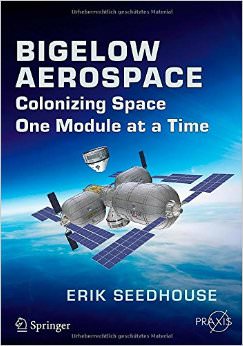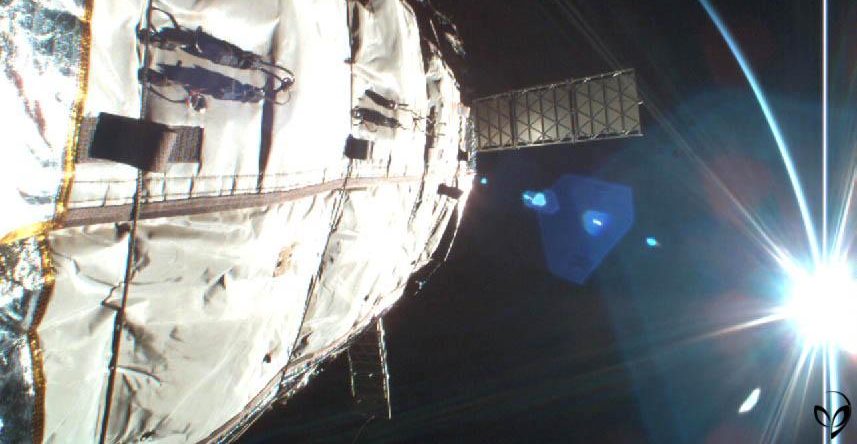Inflatable space modules are not a new concept, NASA have been exploring the possibility since the 1960’s. The Chinese Space Agency is now getting in on the act and is testing its new inflatable module which is part of its Shijian-19 satellite launch. To get it into orbit the capsule was compressed and folded and then inflated once in orbit. Following completion of the tests, it re-entered the atmosphere, landing in the Gobi Desert on 10th October. The goal is for this to be used to extend its space station in the same way NASA have been exploring expansion of ISS.
Continue reading “China Tests a Reusable Inflatable Module in Space”Space Station Gets Experimental New Room with Installation of BEAM Expandable Habitat
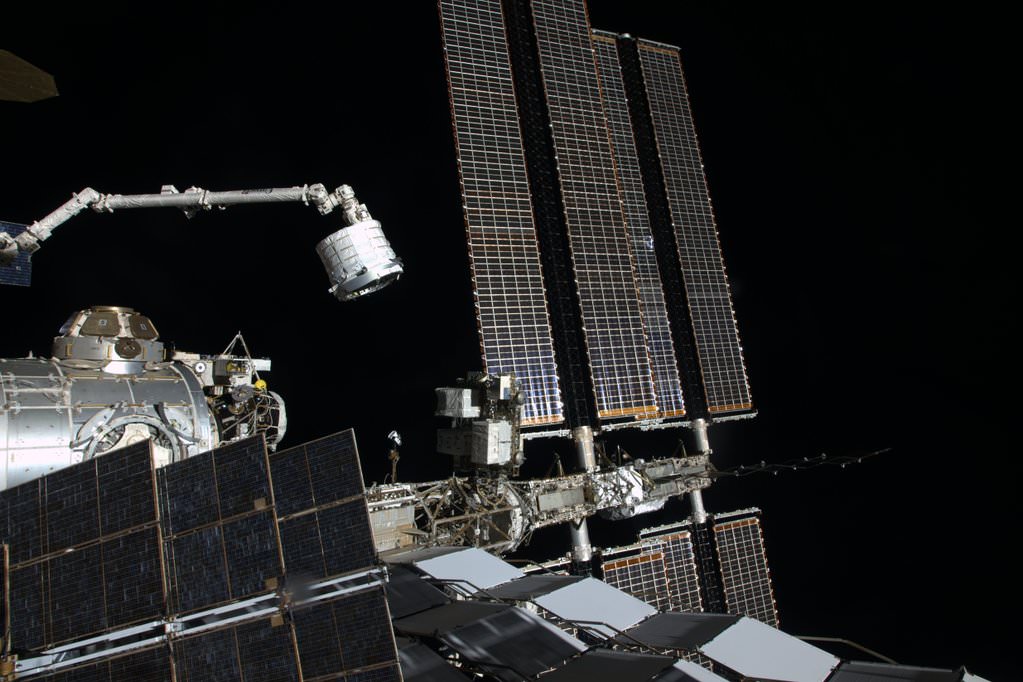

The International Space Station (ISS) grew in size today, April 16, following the successful installation of an experimental new room – the BEAM expandable habitat module.
Engineers at NASA’s Johnson Space Center in Houston used the space station’s high tech robotic arm to pluck the small module known as the Bigelow Expandable Activity Module (BEAM) out from the unpressurized rear truck section of the recently arrived SpaceX Dragon cargo freighter, and added it onto the orbiting laboratory complex.
BEAM was manufactured by Las Vegas-based Bigelow Aerospace under a $17.8 million contract with NASA. It will remain joined to the station for at least a two-year test period.
The 3115 pound (1413 kg) BEAM will test the use of an expandable space habitat in microgravity with humans for the first time.
It was extracted from the Dragon’s trunk overnight with the robotic Canadarm2 and then installed on the aft port of the Tranquility module at 5:36 a.m. EDT over a period of about 4 hours. The station was flying over the Southern Pacific Ocean at the moment of berthing early Saturday.
NASA astronaut and ISS Expedition 47 crew member Tim Kopra snapped a super cool photo of BEAM in transit, shown above.

BEAM was carried to orbit in a compressed form inside the Dragon’s truck following the April 8 blast off from Cape Canaveral Air Force Station at 4:43 p.m. EDT on the Dragon CRS-8 resupply mission for NASA to the ISS.
BEAM is a prototype inflatable habitat that could revolutionize the method of construction of future habitable modules intended for use both in Low Earth Orbit (LEO) as well as for deep space expeditions Beyond Earth Orbit (BEO) to destinations including the Moon, Asteroids and Mars.
The advantage of expandable habitats is that they offer a much better volume to weight ratio compared to standard rigid metallic structures such as all of the current ISS pressurized modules.
It is constructed of lighter weight reinforced fabric rather that metal. This counts as the first test of an expandable module and investigators want to determine how it fares with respect to protection again solar radiation, space debris and the temperature extremes of space.
Furthermore they also take up much less space inside the payload fairing of a rocket during launch.
Watch this animation showing how Canadarm2 transports BEAM from the Dragon spacecraft to a side berthing port on Tranquility where it will soon be expanded.
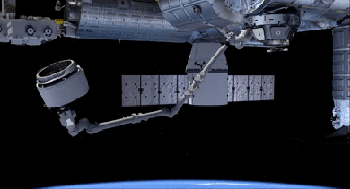
Current plans call for the module to be expanded in late May with air. It will expand to nearly five times from its compressed size of 8 feet in diameter by 7 feet in length to roughly 10 feet in diameter and 13 feet in length. Once inflated it will provide 565 cubic feet (16 m3) of habitable volume.
Exactly how it will expand is also an experiment and could happen in multiple ways. Therefore the team will exercise great caution and carefully monitor the inflation and check for leaks.

The astronauts will first enter BEAM about a week after the expansion. Thereafter they will visit it about 2 or 3 times per year for several hours to retrieve sensor data and assess conditions, say NASA officials.
Visits could perhaps occur even frequently more if NASA approves. says Bigelow CEO Robert Bigelow.
BEAM is an extraordinary test bed in itself.

But Robert Bigelow hopes that BEAM can be used to conduct science experiments after maybe a six month shakedown cruise, if all goes well, and NASA approves a wider usage.
Bigelow Aerospace has already taken in the next step in expandable habitats.
Earlier this week, Bigelow and rocket builder United Launch Alliance (ULA) announced they are joining forces to develop and launch the B330 expandable commercial habitat module in 2020 on an Atlas V. It is about 20 times larger and far more capable. Details in my story here.
Robert Bigelow says he hopes that NASA will approve docking of the B330 at the ISS.
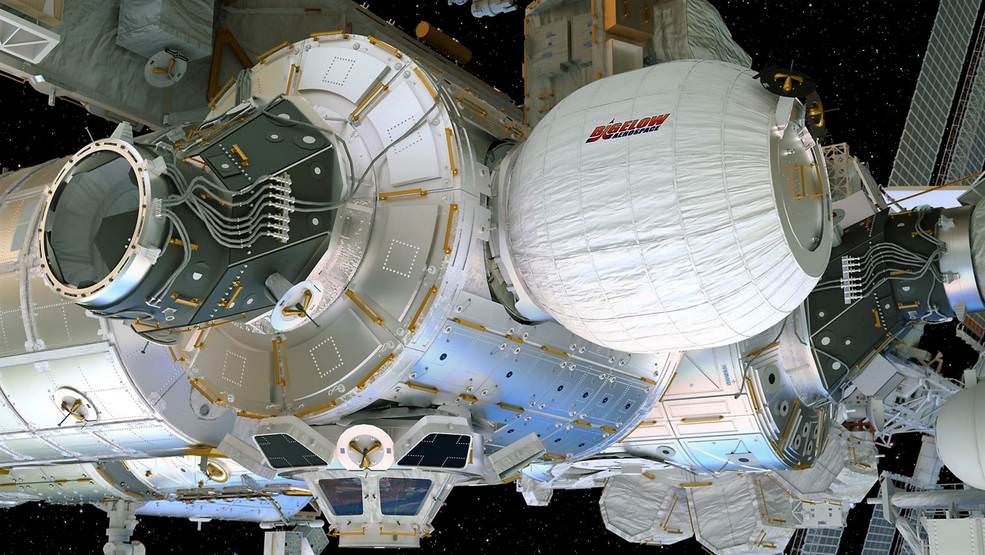
Credits: Bigelow Aerospace
The SpaceX Dragon spacecraft delivered almost 7,000 pounds of cargo.
CRS-8 counts as the company’s eighth flight to deliver supplies, science experiments and technology demonstrations to the ISS for the crews of Expeditions 47 and 48 to support dozens of the approximately 250 science and research investigations in progress.
Stay tuned here for Ken’s continuing Earth and planetary science and human spaceflight news.
………….
Learn more about SpaceX, NASA Mars rovers, Orion, SLS, ISS, Orbital ATK, ULA, Boeing, Space Taxis, NASA missions and more at Ken’s upcoming outreach events:
Apr 17: “NASA and the Road to Mars Human Spaceflight programs”- 1:30 PM at Washington Crossing State Park, Nature Center, Titusville, NJ – http://www.state.nj.us/dep/parksandforests/parks/washcros.html
Bigelow and ULA Partner to Launch Commercial Space Habitat in 2020

Interior schematic view of Bigelow Aerospace B330 expandable module. Credit: Bigelow Aerospace
Bigelow Aerospace and United Launch Alliance (ULA) announced they are joining forces to develop and launch the world’s first commercial space habitat to Low Earth Orbit (LEO) by 2020 – potentially as a huge and revolutionary new addition to the International Space Station (ISS).
The expandable habitat will be based on the Bigelow Aerospace B330 module and would be carried to orbit on the most powerful version of ULA’s venerable Atlas V rocket.
Robert Bigelow, founder and president of Bigelow Aerospace, and Tory Bruno, ULA president and CEO announced the partnership on the fully commercial space habitat during a joint media briefing held at the 32nd Space Symposium in Colorado Springs, Colorado on April 11.
“We could not be more pleased than to partner with Bigelow Aerospace and reserve a launch slot on our manifest for this revolutionary mission,” said Tory Bruno, ULA president and CEO.
The B330 boasts an interior volume of 330 cubic meters (12,000 cu ft). It measures 57 feet (17.3 m) in length, weighs 20 tons and offers a design life span of 20 years.
If NASA agrees to attach the B330 to the ISS, the stations habitable volume would grow by a whopping 30% in one giant step.
“The alliance represents the first-ever commercial partnership between a launch provider and a habitat provider,” according to ULA.
The advantage of expandable habitats is that they offer a much better volume to weight ratio compared to standard rigid structures, such as all of the current ISS pressurized modules.
The station based B330 concept is named XBASE or Expandable Bigelow Advanced Station Enhancement.
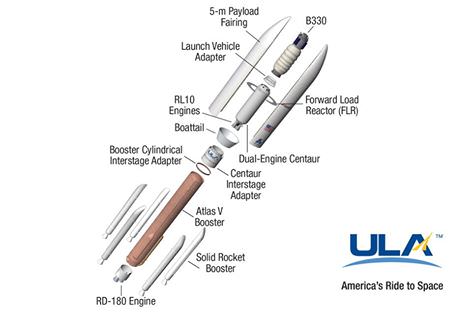
The additional volume would enable a significant increase in the orbiting outposts ability to support research and development operations and manufacturing processes for NASA and commercial users.
Bigelow further views the B330 and follow on modules as a potential destination for space tourism and a beneficial component for human missions to the Moon and Mars.
“We are exploring options for the location of the initial B330 including discussions with NASA on the possibility of attaching it to the International Space Station (ISS),” said Robert Bigelow, founder and president of Bigelow Aerospace.
“In that configuration, the B330 will enlarge the station’s volume by 30% and function as a multipurpose testbed in support of NASA’s exploration goals as well as provide significant commercial opportunities. The working name for this module is XBASE or Expandable Bigelow Advanced Station Enhancement.”
Bigelow said his firm plans to build two B330 modules by 2020.
The B330 would be tucked inside the cavernous payload fairing of the Atlas V which would launch in the 552 configuration with 5 meter diameter fairing with 5 solid rocket booster attached to the first stage and a dual engine Centaur second stage.
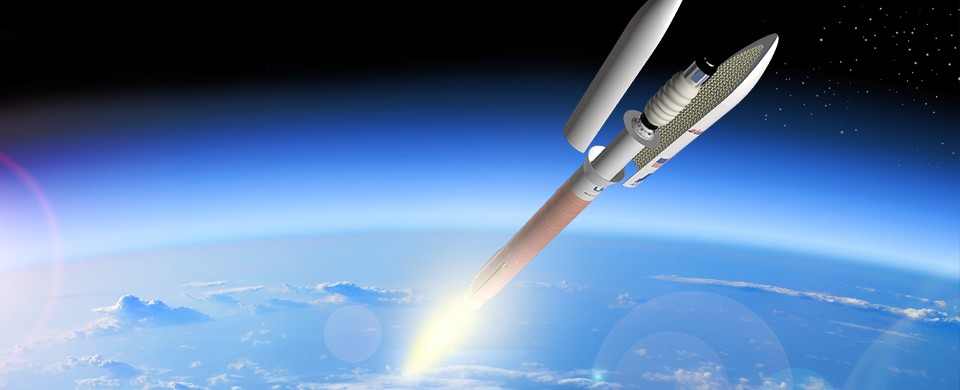
“When looking for a vehicle to launch our large, unique spacecraft, ULA provides a heritage of solid mission success, schedule certainty and a cost effective solution,” says Bigelow.
The SpaceX falcon 9 fairing is not big enough to house the B330.
“SpaceX, they do not have the capability with the fairing size that is necessary to accommodate the B330. So that is not even a choice,” Bigelow stated.
The B330 partnership announcement follows hot on the heels of last weeks successful launch of Bigelow’s experimental BEAM expandable module on a SpaceX Falcon 9 rocket on a mission to the ISS on April 8.
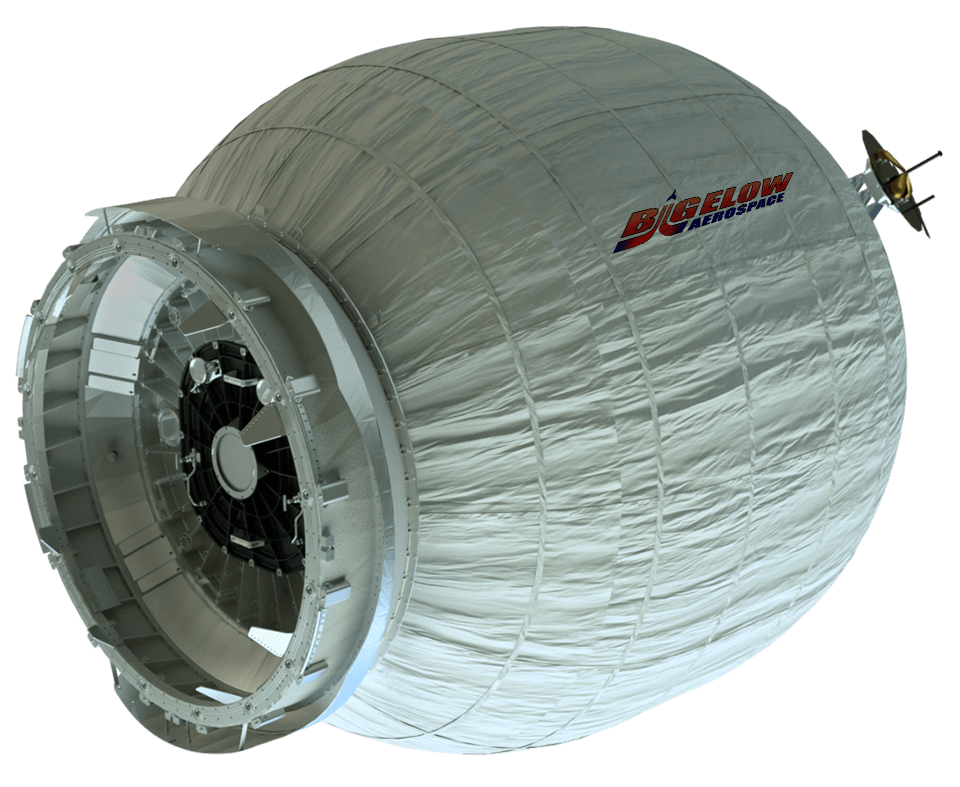
BEAM is tucked inside the rear truck section of the SpaceX Dragon now berthed at the station. It will soon be attached to a side port on the Harmony module.
“This innovative and game-changing advance will dramatically increase opportunities for space research in fields like materials, medicine and biology,” said Bruno.
“It enables destinations in space for countries, corporations and even individuals far beyond what is available today, effectively democratizing space. We can’t begin to imagine the future potential of affordable real estate in space.”
The B330 could also function as a free flyer but would work best at the station, Bigelow noted at the briefing.
Both of the commercial space taxis being developed under NASA’s commercial crew program (CCP) could dock at the B330; the Boeing Starliner and the SpaceX crew Dragon, Bigelow stated.
Multiple B330 modules could also be joined together in orbit to form a free flying commercial space station.
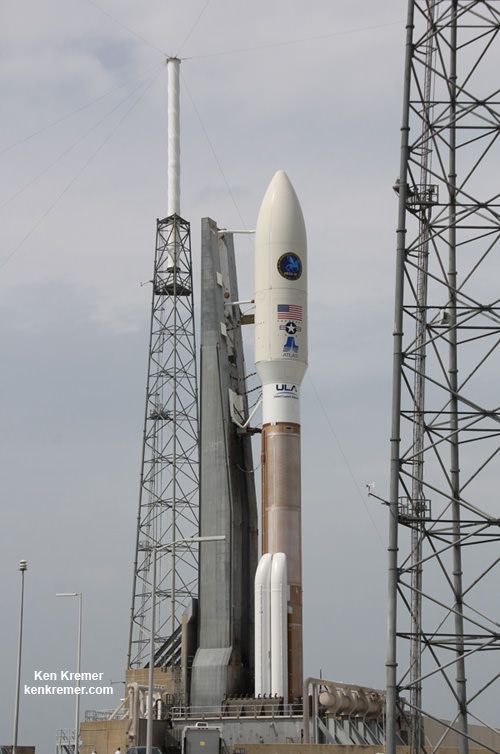
Stay tuned here for Ken’s continuing Earth and planetary science and human spaceflight news.
………….
Learn more about SpaceX, ULA, commercial space, NASA Mars rovers, Orion, SLS, ISS, Orbital ATK, Boeing, Space Taxis, NASA missions and more at Ken’s upcoming outreach events:
Apr 17: “NASA and the Road to Mars Human Spaceflight programs”- 1:30 PM at Washington Crossing State Park, Nature Center, Titusville, NJ – http://www.state.nj.us/dep/parksandforests/parks/washcros.html
Moonbase by 2022 For $10 Billion, Says NASA
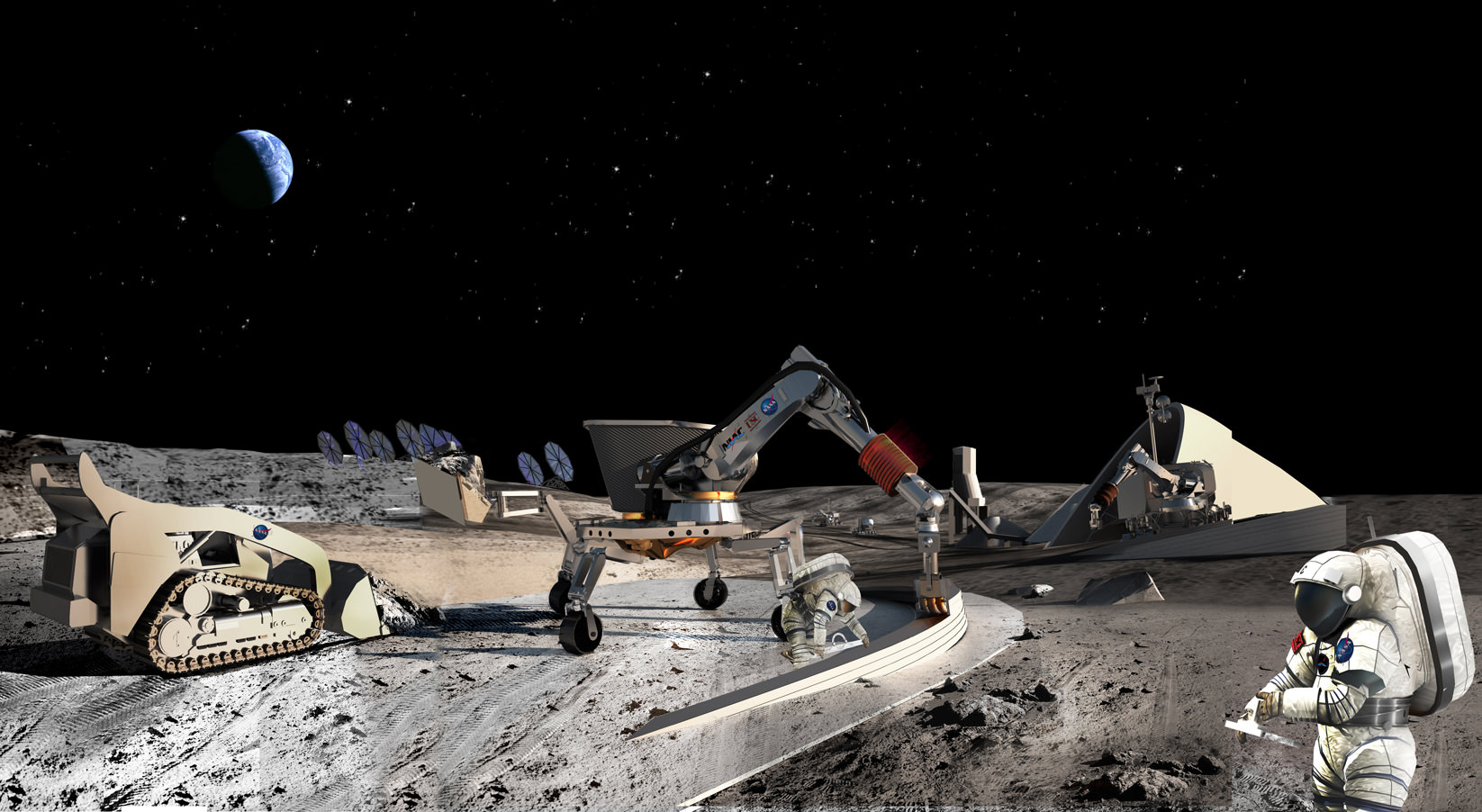
Returning to the Moon has been the fevered dream of many scientists and astronauts. Ever since the Apollo Program culminated with the first astronauts setting foot on the Moon on July 20th, 1969, we have been looking for ways to go back to the Moon… and to stay there. In that time, multiple proposals have been drafted and considered. But in every case, these plans failed, despite the brave words and bold pledges made.
However, in a workshop that took place in August of 2014, representatives from NASA met with Harvard geneticist George Church, Peter Diamandis from the X Prize Foundation and other parties invested in space exploration to discuss low-cost options for returning to the Moon. The papers, which were recently made available in a special issue of New Space, describe how a settlement could be built on the Moon by 2022, and for the comparatively low cost of $10 billion.
Continue reading “Moonbase by 2022 For $10 Billion, Says NASA”
Review: “Bigelow Aerospace: Colonizing Space One Module at a Time”
You’ve had a busy day wandering around a faraway part of our solar system. It’s time to put your head down for a nap. Where do you place it? According to Erik Seedhouse in his book “Bigelow Aerospace: Colonizing Space One Module at a Time“, you easily slip into a space module, doff your all-purpose space suit and enjoy the pleasures of a safe secure environment. Know of a better way to get over that stressful day?
Now what can you write about a space module? You can try to present all sorts of details and specifications, but that makes for a rather dry read. You can try to present imaginative different uses and configurations, but they’d be only pipe dreams. Or, you can bring both together and add lots of recent history, and you’d come up with something like what Seedhouse provides.
In his book, he shows that while Bigelow Aerospace has something ready for the International Space Station this year, it derives from a NASA concept many years ago. In particular, he sets the direct precursor as NASA’s TransHab that resulted from copious design work and intensive testing. Actually, a good part of the first part of the book is all about the NASA studies; sometimes reading as if the information came direct from NASA technical sheets. The nice thing about this is that the detail is quite involved. For example, are you interested in knowing the relative stress and strain qualities of phenylene benzobisoxazole? Or that early balloons were made of polyethylene terephthalate film? On the imaginative side, the book has many great diagrams and pictures of hypothetical inflatable modules, whether for journeying to Mars, visiting an asteroid or just hanging around in a centrifuge. These serve well to describe the intended usage by NASA as well as the ideas that Bigelow Aerospace is contemplating for the future of space modules.
While the details on space modules fill most of the book, there’s more. The book begins with a slight biography of Robert Bigelow. While these facts are interesting, their only relevance seems to be with Bigelow’s purchase of the eight TransHab rights and with his keen interest and support of many things related to aliens and UFOs. Towards the book’s end, Seedhouse spreads his topic to include a discussion on the launcher industry. Here, he rightfully cautions that the success of private industry space modules comes directly from the success of private industry launchers. And we know how well this is going so far! Seedhouse’s last chapter imagines how a space module can be used on the Moon but then he also warns that other countries, such as China, may claim that world beforehand.
Yes, this book seems to have so much in it and so much going for it. Somehow though, it misses the mark. With a title screaming out ‘Bigelow’, I would have expected lots of corporate insights. Yet, it seems that the author’s sole direct knowledge source is one interview with Robert Bigelow. The book’s data reads almost as if straight from a NASA data sheet or a Bigelow Aerospace advertisement. Yes, this smallish book does have lots in it, but nothing that pushes the boundary forward. Equally the near xenophobic rant toward the end detracts from an otherwise sound technical review. Still, once the Bigelow Expandable Space Module becomes part of the International Space station at least the book’s subject will have made a great step forward.
The technical review is the strength of this book by Erik Seedhouse. In “Bigelow Aerospace – Colonizing Space One Module at a Time” we get the feel for a technology that has showed a lot of promise and is on the verge of becoming a player in space. In many ways, the book is homage to a person that’s taken a waylaid government idea and turned it into a corporate product. As the book implies, go industry, go!
The book is available at Amazon. Find out more about Eric Seedhouse at the Astronauts4Hire website. Learn more about Bigelow Aerospace here.
Bigelow Inflatable Module to be Added to Space Station in 2015
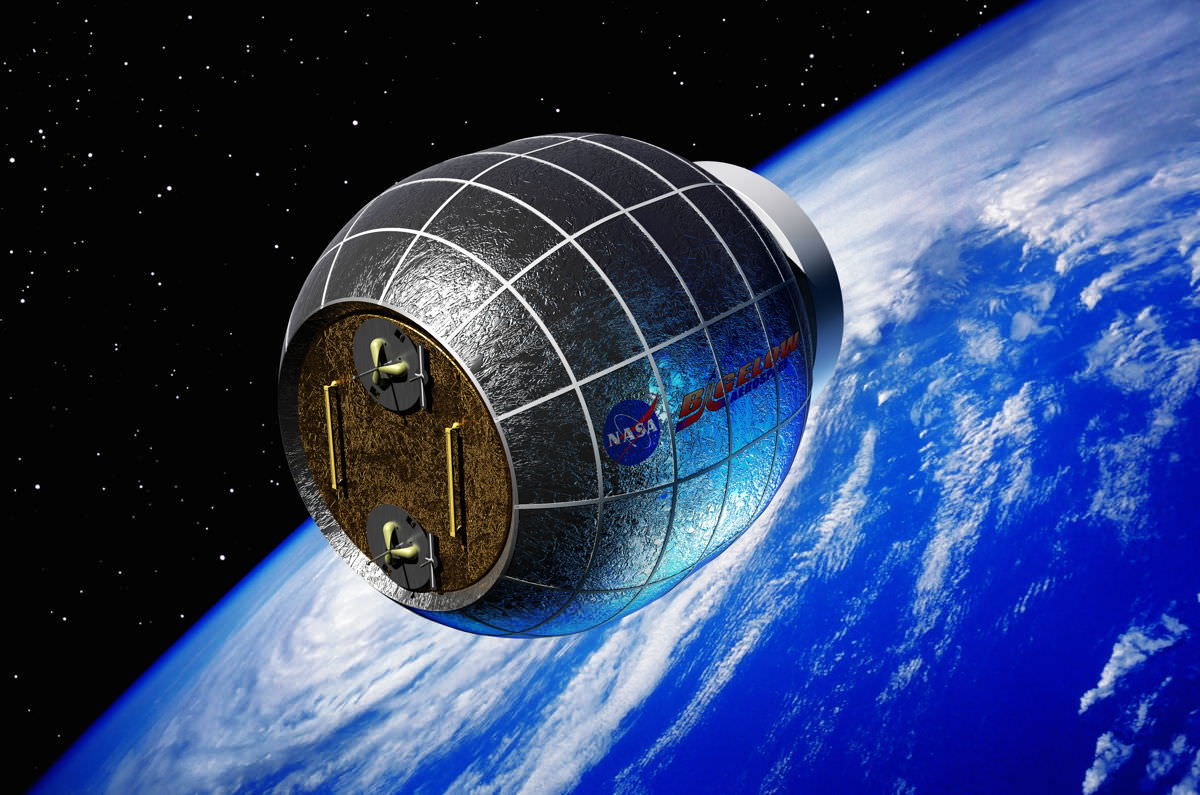
Astronauts aboard the International Space Station are going to be getting an addition in the near future, and in the form of an inflatable room no less. The Bigelow Expandable Activity Module (BEAM) is the first privately-built space habitat that will added to the ISS, and it will be transported into orbit aboard a Space X Falcon 9 rocket sometime next year.
“The BEAM is one small step for Bigelow Aerospace,” Bigelow representative Michael Gold told Universe Today, “but is also one giant leap for private sector space activities since the BEAM will be the first privately owned and developed module ever to be part of a crewed system in space.”
Continue reading “Bigelow Inflatable Module to be Added to Space Station in 2015”
Bigelow Gives You A Chance To Be A Simulated Astronaut. Here’s How To Apply
Bigelow — that company that has two inflatable structures in orbit and that plans to add an inflatable room to the International Space Station — is looking for help. The company is asking people to come to its Las Vegas facility and pretend to be astronauts for a few hours, to better test spacecraft ideas.
“The successful candidates will be expected to spend eight, 16 or 24 hour periods in a closed volume spacecraft simulation chamber. Candidates will live (eat, sleep and exercise) inside the chamber for defined periods of time and will be monitored continuously,” Bigelow wrote on the job description.
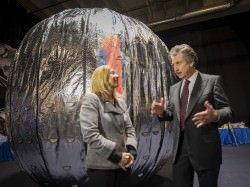
“Successful candidates will be given structured daily tasks and schedules and will be expected to produce detailed daily reports on their activities and on their interactions with other crew members. The candidate will implement Bigelow Aerospace programs for quantifying, evaluating and optimizing crew systems, including process efficiencies, program quality and reporting on psychological, existential, social and environmental factors in spacecraft crews.”
Take note that only U.S. citizens or permanent residents are allowed to apply, and that you must hold a “BS or MS in Social, Psychological, Behavioral, Biological, Nursing, Engineering, or Human Factors Sciences,” Bigelow added.
Here’s the application page, and best of luck!
NASA to BEAM Up Inflatable Space Station Module

More details have emerged on NASA’s plan to add the first commercial module to the International Space Station, an inflatable room built by Bigelow Aerospace. The Bigelow Expandable Activity Module (BEAM), which is scheduled to arrive at the space station in 2015 for a two-year technology demonstration. It will be delivered by another commercial company, SpaceX, on what is planned to be the eighth cargo resupply mission too the ISS for Dragon and the Falcon 9 rocket. Astronauts will use the station’s robotic arm to install the module on the aft port of the Tranquility node. NASA Deputy Administrator Lori Garver announced Wednesday NASA has awarded a $17.8 million contract to Bigelow Aerospace for BEAM.
“Today we’re demonstrating progress on a technology that will advance important long-duration human spaceflight goals,” Garver said. “NASA’s partnership with Bigelow opens a new chapter in our continuing work to bring the innovation of industry to space, heralding cutting-edge technology that can allow humans to thrive in space safely and affordably.”
BEAM is a cylindrical module, like all other ISS modules, and is about somewhat similar in size to the US Harmony module, as BEAM is about 4 meters (13 feet) long and 3.2 meters (10.5 feet) wide; Harmony 7.2 meters (24 ft) in length, and it has a diameter of 4.4 meters (14 ft). But weight is where the two vastly differ: Harmony weighs in 14,288 kilograms (31,500 lb), while BEAM weighs roughly 1,360 kg (3,000 pounds). And that is the big advantage of inflatable structures for use in space: their mass and volume are relatively small when launched, reducing launch costs.
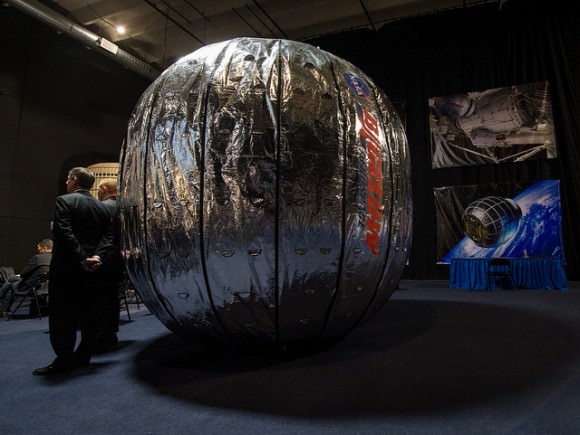
Leonard David reports on Space.com that the BEAM module should be much quieter than the other modules due to the non-metallic nature of the structure.
Read: Sounds of the Space Station
After the module is berthed to the Tranquility node, the station crew will activate a pressurization system to expand the structure to its full size using air stored within the packed module.
During the two-year test period, station crew members and ground-based engineers will gather performance data on the module, including its structural integrity and leak rate. An assortment of instruments embedded within module also will provide important insights on its response to the space environment. This includes radiation and temperature changes compared with traditional aluminum modules.
BEAM will also be assessed for future habitats for long-duration space missions, said Bill Gerstenmaier, associate administrator for human exploration and operations at NASA.
Watch how the BEAM module will be attached and inflated:
Astronauts periodically will enter the module to gather performance data and perform inspections. Following the test period, the module will be jettisoned from the station, and will burn up on re-entry.
Bigelow Aerospace says the BEAM 330 module can function as an independent space station, or several of the inflatable habitats can be connected together in a modular fashion to create an even larger and more capable orbital space complex.
Bigelow also lists their radiation shielding as equivalent to or better than the other modules on the International Space Station and substantially reduces the dangerous impact of secondary radiation, while their innovative Micrometeorite and Orbital Debris Shield “provides protection superior to that of the traditional ‘aluminum can’ designs, according to the Bigelow Aerospace website.
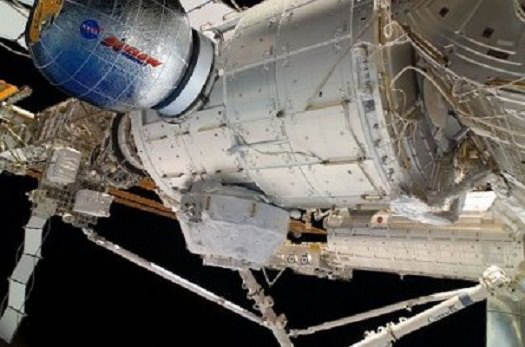

Source SPACE.com.
Bigelow Inflatable Module Will be Added to Space Station
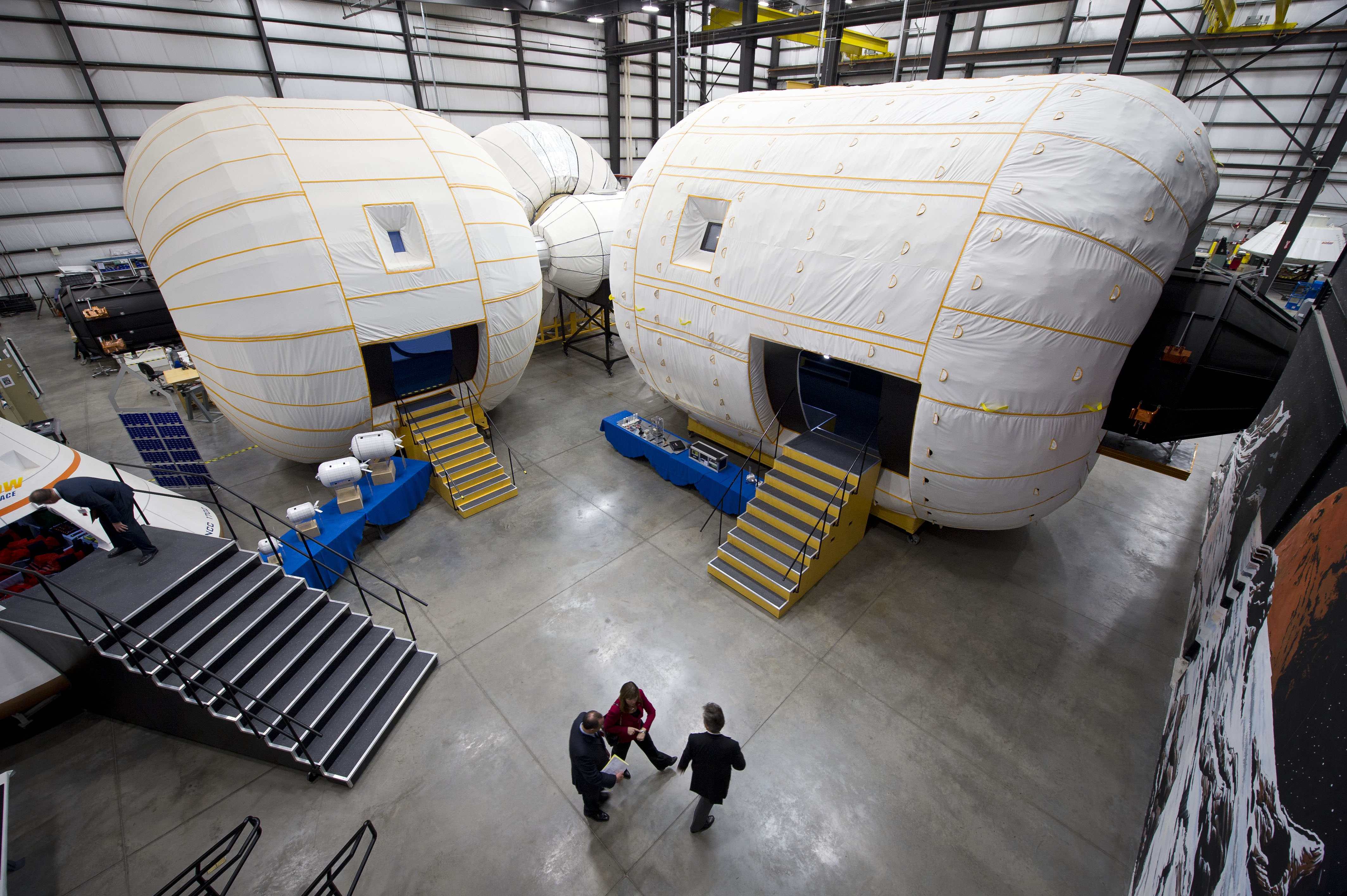
The next addition to the International Space Station will likely be an inflatable module from Bigelow Aerospace. NASA announced today they have awarded a $17.8 million contract to Bigelow to provide a new module for the ISS. “The Bigelow Expandable Activity Module will demonstrate the benefits of this space habitat technology for future exploration and commercial space endeavors,” NASA said in a press release. This would be the first privately built module to be added to the space station.
“The International Space Station is a unique laboratory that enables important discoveries that benefit humanity and vastly increase understanding of how humans can live and work in space for long periods,” NASA Deputy Administrator Lori Garver said. “This partnership agreement for the use of expandable habitats represents a step forward in cutting-edge technology that can allow humans to thrive in space safely and affordably, and heralds important progress in U.S. commercial space innovation.”
NASA will release more information about the agreement and the module next week, but previous reports have indicated the inflatable module would be used for adding additional storage and workspace, and the module would be certified to remain on-orbit for two years.
NASA has been in discussions with Bigelow for several years about using their inflatable technology.
In 2006 Bigelow launched their Genesis I inflatable test module into orbit and according to their website, it is still functioning and “continuing to produce invaluable images, videos and data for Bigelow Aerospace. It is now demonstrating the long-term viability of expandable habitat technology in an actual orbital environment.”
A second Genesis module was launched in 2007 and it, too, is still functioning in orbit.
Bigelow has said that even though the outer shell of their module is soft, as opposed to the rigid outer shell of current modules at the ISS, Bigelow’s inflatable modules are more resistant to micrometeoroid or orbital debris strikes. Bigelow uses multiple layers of Vectran, a material which is twice as strong as Kevlar. In ground tests, according to NASASpacefight.com, objects that would penetrate ISS modules only penetrated half-way through the skin of Bigelow’s modules.


